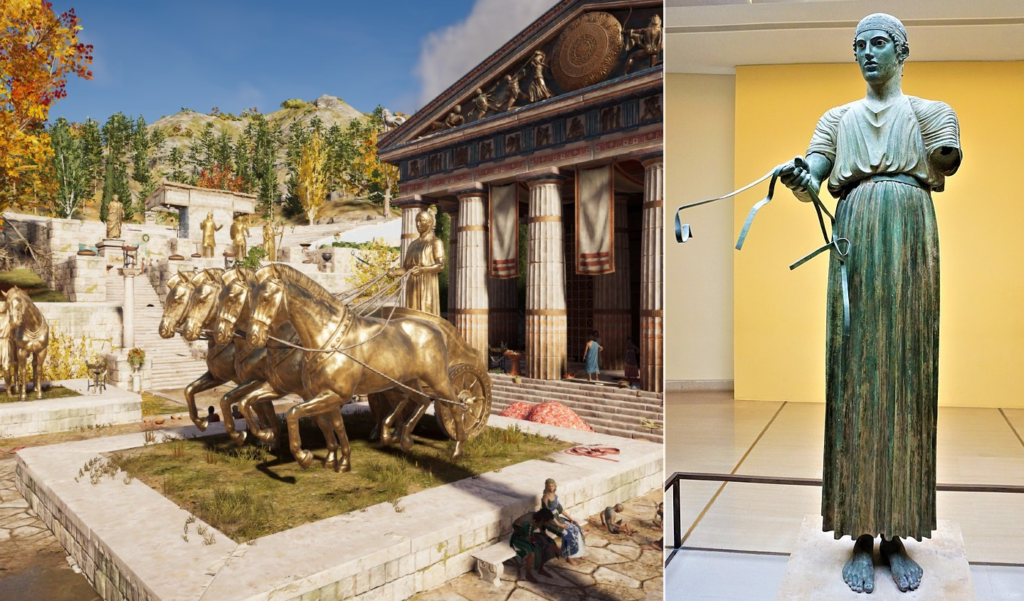
The Charioteer of Delphi: A Masterpiece of Greek Bronze Sculpture
Discovered in 1896 within the sacred precinct of Apollo at Delphi, the Charioteer of Delphi is one of the most celebrated bronze sculptures from ancient Greece. Dating back to the 5th century BC, specifically around 470 BC, this exquisite statue stands as a prime example of the Early Classical style, which emphasized realistic detail and naturalistic poses.
The Charioteer was originally part of an elaborate group that included a chariot, horses, and possibly a groom, all dedicated to commemorate a victory in the Pythian Games, which were held in Delphi every four years in honor of the god Apollo. The statue was commissioned by Polyzalus, the tyrant of Gela in Sicily, to celebrate his victory in the chariot race. This kind of monumental offering was typical of the period, reflecting both religious devotion and social prestige.
The Charioteer is a life-sized statue made of bronze, standing about 1.8 meters tall. It depicts a young man wearing a long, flowing tunic known as a xystis, which was typically worn by chariot racers. The fabric of the xystis is rendered with astonishing realism, suggesting the lightness and fine texture of the material. The statue’s poised expression and detailed craftsmanship convey a sense of calm stoicism and focused determination.

What makes the Charioteer particularly remarkable is the preservation of minute details, such as the inlaid glass eyes, which give the figure a strikingly lifelike appearance. The charioteer’s hair, arranged in perfect curls, complements the soft features of his youthful face, highlighting the sculptor’s skill in capturing both the physical and psychological intensity of the moment.
The Charioteer stands as a testament to the technological and artistic advancements of its time. The use of hollow bronze casting allowed for the creation of larger, more dynamic statues, while the subtle play of balance and movement displayed in the pose of the Charioteer reflects a sophisticated understanding of human anatomy and kinesthetics.
Today, the Charioteer of Delphi is housed in the Archaeological Museum of Delphi, where it continues to awe visitors with its detailed craftsmanship and historical significance. As one of the few bronze statues from this era to have survived mostly intact, it offers invaluable insights into ancient Greek art, culture, and religion.
The Charioteer of Delphi not only commemorates a historical event but also symbolizes the artistic and cultural achievements of ancient Greece. Its enduring beauty and realism continue to inspire and captivate audiences, making it a perennial subject of study and admiration in the world of classical art.